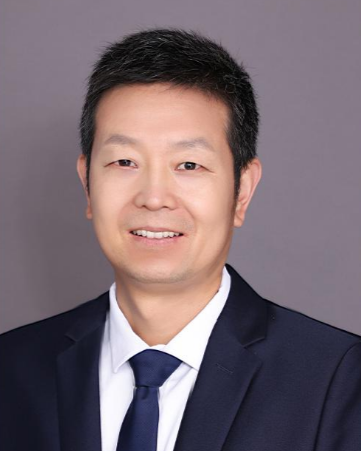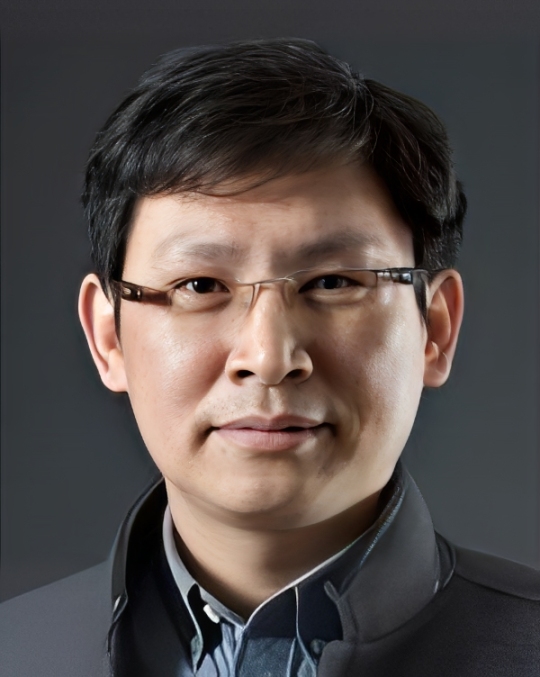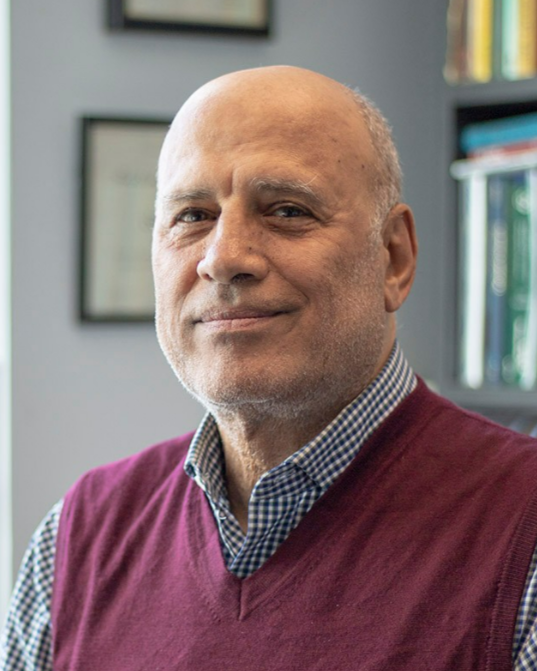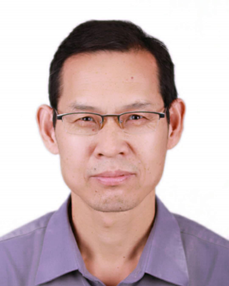Prof. Said Easa Fellow of the Canadian Academy of Engineering Toronto Metropolitan University, Canada |
Dr. Said Easa is a Professor of Civil Engineering at Toronto Metropolitan University, Canada. He earned his Ph.D. in Transportation Engineering from the University of California, Berkeley. He has held various leadership positions, including Chair of the Department of Civil Engineering and Director of Quality Assurance for the Faculty of Engineering and Architectural Science. In 2012, he was selected as a global expert in the Chinese central government's Thousand Talents Program. He is a Fellow of several organizations, including the Canadian Academy of Engineering, the Canadian Society for Civil Engineering (CSCE), and the International Association of Advanced Materials (IAAM). His research interests include planning, design, operation, and management of transportation systems. Dr. Easa has published over 470 peer-reviewed journal articles and more than 300 contributions, including book chapters, edited volumes, national magazine articles, conference papers, presentations, and reports. He served as the editor of a bestselling book on Urban Planning and Development Applications of GIS, published by the American Society of Civil Engineers (ASCE). He is an Associate Editor for the Journal of Transportation Engineering and the Canadian Journal of Civil Engineering. His professional activities include serving as president of the Online Network Enabled ITS Research Society, guest editor for various journals, and leading a national delegation to China. He has also judged the annual Canadian Consulting Engineering Awards and participated in national grant selection committees. Dr. Easa has chaired ten national conferences sponsored by ASCE, CSCE, and IAAM, and has served as CSCE Vice-President. Dr. Easa has received many national/international awards and honors from Canadian and U.S. organizations. These accolades include the ASCE Frank M. Masters Transportation Engineering Award, the ASCE Wellington M. Arthur Prize, the CSCE Sandford Fleming Award, the CSCE Keefer Medal, the Award of Academic Merit from the Transportation Association of Canada, and the IAAM Medal.
 |
Prof. Shaolin Liao National-Level Talent Sun Yat-sen University, China |
Biography:
Professor Shaolin Liao earned his Bachelor's degree in Materials Science and Engineering from Tsinghua University and his Ph.D. in Electrical and Computer Engineering from the University of Wisconsin-Madison (UW-Madison), USA. He also obtained dual Master's degrees in Materials Science and Electrical Engineering, both from UW-Madison.
He conducted interdisciplinary postdoctoral research successively in the Physics Department at Queens College of the City University of New York (CUNY) and in the Engineering Physics Division at Argonne National Laboratory (ANL) – the first national laboratory under the U.S. Department of Energy. He was promoted to Adjunct Assistant Professor at CUNY in November 2009 and to Permanent Electrical Engineer at ANL in November 2013.
In February 2019, he was appointed as a Professor in the Department of Electrical and Computer Engineering at the Illinois Institute of Technology (IIT) in Chicago, USA. In February 2021, he was recruited through the "Hundred Talents Program" at Sun Yat-sen University as a leading talent, Professor, and Doctoral Supervisor. His research focuses on Information and Communication Engineering, supervising doctoral and master's students in related fields.
 |
Prof. Kegen Yu IEEE Senior Member China University of Mining and Technology, China |
Biography:
Professor Kegeng Yu is a Distinguished Professor and Doctoral Supervisor at the School of Environment Science and Spatial Informatics, China University of Mining and Technology. He was selected for the Hubei Provincial "100-Talent Program" in 2015 and honored as a Hubei Provincial Distinguished Expert in the same year.
From 2013 to 2017, he served as an editorial board member for three international SCI-indexed journals (IEEE Transactions on Vehicular Technology, IEEE Transactions on Aerospace and Electronic Systems, and EURASIP Journal on Advances in Signal Processing) for five consecutive years. As the Lead Guest Editor, he organized six special issues for SCI journals.
Professor Yu has authored five English academic monographs in wireless positioning and navigation, published by internationally renowned publishers such as IEEE-Wiley Press, Springer Nature, and Science Press. Three of these monographs have received positive reviews on Amazon. Additionally, he contributed to five English academic monographs in ultra-wideband communications and remote sensing. He has published over 100 SCI-indexed journal papers.
His research focuses on wireless positioning technologies, indoor positioning and navigation, GNSS-based remote sensing, and signal processing.
 |
 Prof. Lingfeng Shi IEEE Senior Member Xidian University, China |
Biography:
Professor Lingfeng Shi's current research focuses on sensor signal processing, positioning and navigation, wireless communications, and integrated circuit design. He has published over 130 journal articles, including 100+ journal papers and 20+ conference papers. Among these, 90+ are SCI-indexed (nearly 20 in Q2 or higher, including 30 IEEE journal papers), 10+ are EI-indexed, and 20+ are ISP-indexed. He holds 21 authorized national invention patents, 1 utility model patent, and has 6 patent applications pending, with 2 inventions already licensed.
Professor Shi is a Senior Member of IEEE and serves as a reviewer for 20+ authoritative international SCI journals (including IEEE, IET, MEJ, and JIE publications) and several leading Chinese journals such as Acta Electronica Sinica (Chinese and English editions), China Communications, and Journal of University of Electronic Science and Technology of China. He currently holds editorial positions as Associate Editor of IEEE Open Journal of Instrumentation and Measurement, Guest Editor of Applied Sciences, and editorial board member of Computer Science and Technology and Electronic Products World.
He also serves as an expert committee member for China's National High-Tech Program (863 Program), review expert for the Ministry of Education's Science and Technology Awards, and technical evaluation expert for multiple provincial and municipal science and technology departments.
 |
 Prof. Jian Yao National-Level Young Talent Wuhan University, China |
Biography:
Professor Jian Yao is a Doctoral Supervisor and "Chu Tian Scholar" Distinguished Professor at the School of Remote Sensing and Information Engineering, Wuhan University, where he also serves as an academic leader. He has been selected for prestigious national and regional talent programs, including Category A of the National Major Talent Program (Youth Project), Jiangxi Province's "Double Thousand Plan", and Changsha's Leadership Talent Program for Introducing Urgently Needed and Strategic Talents.
Since joining Wuhan University as an academic leader in April 2012, Professor Yao has participated in multiple large-scale international projects, including the EU's Sixth and Seventh Framework Programs, and collaborative projects with the International Atomic Energy Agency. He has applied for over 80 national invention patents and other intellectual property rights, with more than 40 patents already granted.
Professor Yao has long served as a reviewer for leading international core journals and top conferences in related fields. Upon joining Wuhan University, he founded the Computer Vision and Remote Sensing Laboratory (WHU-CVRS Lab). The lab currently consists of 4 collaborating faculty members, 1 postdoctoral researcher, and over 30 doctoral and master's students.
Since its establishment, the lab has led and participated in a series of national and ministerial-level research projects, including the National Key R&D Program (as project leader), the 973 Program (as participant), and the National Natural Science Foundation of China General Program (as principal investigator). His current research focuses on computer vision, artificial intelligence, robotics, high-precision mapping, SLAM, navigation and positioning, autonomous driving, 3D technology, and VR/AR.



